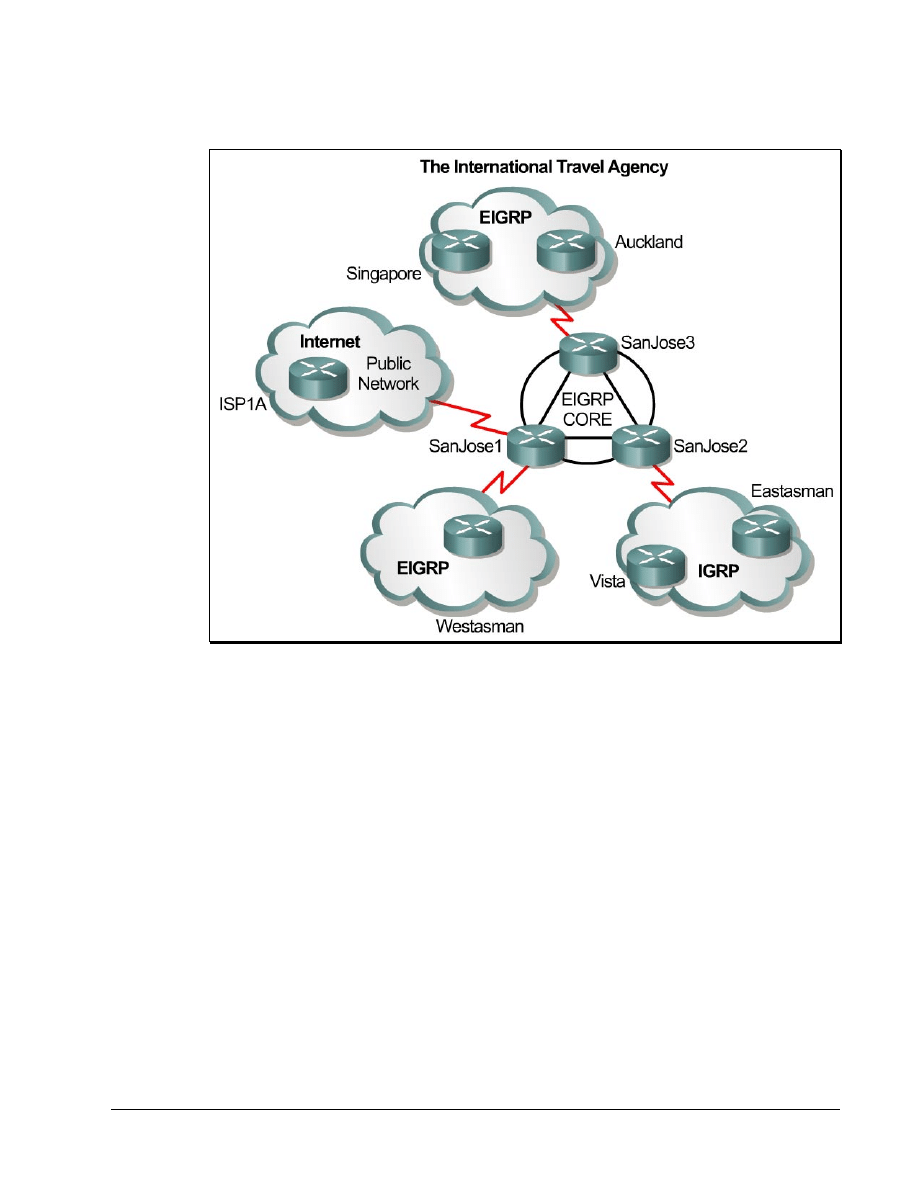
Case Study 1
EIGRP
Cisco Networking Academy Program
CCNP 1: Advanced Routing v3.0

2 - 4
CCNP 1: Advanced Routing v3.0 – CS1
Copyright
2003, Cisco Systems, Inc.
Instructions
Plan, design and implement the complex International Travel Agency EIGRP
network shown in the diagram and description below. Implement the design on
the lab set of routers. Verify that all configurations are operational and
functioning according to the guidelines.

Copyright
2003, Cisco Systems, Inc.
Case Study 1: EIGRP 3 - 4
Scenario
The responsibilities of the network engineer with International Travel Agency include
creating and maintaining the San Jose campus network, connectivity to all regional
headquarters, and Internet access via one or more service providers. The San Jose campus
network must maintain 99.9% availability, while supporting 99% availability to regional
headquarters. The network will be based on and must meet the following requirements:
1. The San Jose core routers must run EIGRP.
2. The network has been allocated one Class B license.
3. Use VLSM on all serial interfaces as may be appropriate.
4. This network will have three branches. The regional headquarters in Singapore and
Auckland will run EIGRP. The Westasman branch office will run EIGRP. The Vista and
Eastasman branch offices will run IGRP.
5. Summarize all routes from each area into the core. Plan for approximately 30 networks
in each area with exception of the core, which is exactly as shown in the diagram.
6. Redistribute routing information between EIGRP and the IGRP network.
7. In Westasman, implement EZ IP on the router for users.

4 - 4
CCNP 1: Advanced Routing v3.0 – CS1
Copyright
2003, Cisco Systems, Inc.
8. In the IGRP cloud of Vista and Eastasman, configure a DHCP server for a LAN segment.
Use an IP helper address so that a workstation on another segment in that area can obtain
an IP address from the DHCP server.
9. Configure Internet connectivity through a static route.
10. Document the configuration and any difficulties that were encountered.
11. What were the implementation issues or limitations?
12. List two suggestions for improving this network configuration and design.
Wyszukiwarka
Podobne podstrony:
CCNP1 v30 CS3
CCNP1 v30 CS2
ccnp3 v30 cs1
CCNP2 v30 CS1
CCNP1 CS1 en
CCNA v30 glossary
ccnp3 v30 cs2
CCNP2 v30 CS2
CS1, Księgozbiór, Europeistyka
CCNA2 v30 CS Routing
ccnp3 v30 icons
więcej podobnych podstron